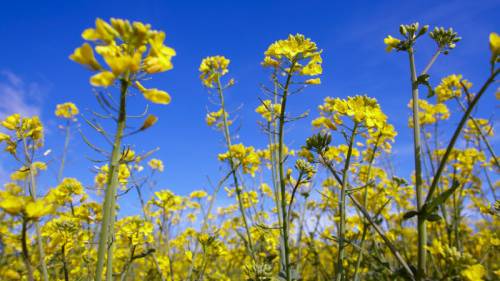Pesticide Innovation Indicates Changing Industry
Editor’s note: This story first appeared in AgriBusiness Global’s January/February print magazine. We now also distribute the magazine digitally for added circulation and convenience. Preview the digital edition here.
Environmentalist Rachel Carson in 1962 published her seminal book, “Silent Spring,” which criticized the pesticide industry and the impact of its products on both nature and human health. The book changed the approach from regulators. It was instrumental in the formation of the U.S. Environmental Protection Agency (EPA) and was one of the pressure points to raise global regulatory standards to approve pesticides.
Carson’s book also marked an important milestone in the development of the crop protection industry, as it emphasized the need to improve the safety and environmental profiles of pesticide products. Industry investment since its publication has made a huge difference.
Today the industry invests more than U.S. $3 billion annually into new technology. According to a new report, there has been a 95% reduction in the application rate of a pesticide per hectare since 1950, meaning farmers need to apply a lower dose of active ingredient to achieve the same efficacy.
At the same time, the product safety profile has improved. The World Health Organization (WHO) classifies pesticides by four categories of descending toxicity from Class 1 to Class U (unlikely to be hazardous). The report states that an average 40% reduction in acute toxicity since the 1960s has meant half of all active ingredients introduced since 2000 are Class U, with no new active ingredients introduced into Class 1.
Access to Innovation
While crop protection innovation is high, access to these tools is not universal. The capacity of regulatory systems in many low-income countries to protect the investment into new innovations is often insufficient, sometimes leaving farmers without new tools. And when growers are without technology, the consequences can be severe.
Take fall armyworm (FAW), a destructive pest first detected in Nigeria in January 2016. FAW has since spread to 44 countries across sub-Saharan Africa and is estimated to reduce annual maize production by 21% to 53% in the absence of pest management.
Insecticides are one of the few proven and effective tools for the management of FAW, but too often countries lack the regulatory capacity to approve the products, or farmers are pushed away from pesticides by campaigners who advocate alternative, often ineffective substitutes. Insect-resistant biotech crops, used successfully to combat FAW in Latin America, are another tool out of reach to most farmers in Africa because governments make political decisions not to use the technology.
Impact on European Productivity
Lack of access to technology is not just a developing world problem. The EU’s political environment and related regulatory decisions have led to reduced access to modern agricultural tools, such as plant biotechnology and crop protection products, contributing to stagnating agricultural productivity and an increasing reliance on food imports, according to a report written by market analyst Agbioinvestor.
The report compares EU agriculture to other major markets, such as Brazil and the United States, where farm productivity has increased markedly. In contrast to their competitors, the report notes that the number of crop protection tools available to EU farmers has decreased significantly in recent years, while there continues to be a de facto ban across much of the region on the cultivation of GM crops.
The EU’s regulatory system also creates hurdles to food imports, where hazard-based rules limit the number of agrochemicals that can be used abroad on agricultural produce that is to be exported to the EU. This hazard-based setting of import-tolerances is expected to create trade distortions as well as problems with production processes in countries exporting to the EU. A continuation of these trends could lead to higher prices and possibly less availability of some foods in the EU.
Innovation is fundamental to helping farmers to meet demand for food. In 1960 there were around 100 crop protection active ingredients available to farmers, compared to around 600 available globally today, plus several hundred more biological pesticides. This large portfolio of crop protection tools — both synthetic and biological — helps increase production by avoiding global food losses of 26% to 40% annually, according to the Food and Agriculture Organization and Organisation for Economic Co-operation and Development.
It is this enhanced toolbox that has helped farmers triple global crop production since 1960, during which time the global population has increased from 3 billion to 7.5 billion people. The rapid increase in global food production has been derived largely from yield increases, with relatively little land expansion. That is to say innovation has allowed us to meet unprecedented demand for food without cultivating our precious natural habitats.
Going Forward
The crop protection industry has changed since 1962, but it must continue to push the boundaries for ever-safer products. It must also continue to research and develop new products to help farmers meet the immense challenges ahead with climate change pressures, increasing populations, and the need to protect precious biodiversity and natural resources from expanding cultivated area.
Fundamental to these advancements is a regulatory environment that provides companies with the predictability to commit to invest. In addition, low-income countries need support to build their regulatory capacities to ensure all farmers can have access to new products. As innovators, we don’t rest. As we enter 2019, the crop protection industry must continue to work to meet the expectations of farmers and society and the challenges ahead.






